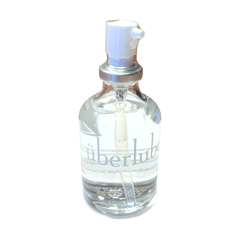Lubricants increase pleasure. Your genital skin is very sensitive. It cradles the nerve endings that allow you to experience touch and other sensations. And although the skin is strong, it can be irritated by vigorous rubbing.
Sexual intimacy usually includes friction, and often the body doesn’t have enough wetness or protection to last for an entire intimate episode. Lubricants can make sexual experiences more slippery, cushiony, comfy, tasty, and pleasurable.
Personal (sexual) lubricants
Moreland OB-GYN offers a few varieties of lubricants that are recommended by our doctors. We sell these discreetly in our office—talk to your provider about what lubricant is right for you.
Click here for lubricants available at Moreland OB-GYN.
Choices, choices. There are thousands of personal lubricants on the market, so choosing the right one for your needs can be tough. Every person has different behaviors, different tolerance to friction, different biologic environments, and different moisture needs. It’s also hard, if not impossible, for
manufacturers to formulate “the right lube.” Here we’ve collected our recommendations for the following features:
.png?width=200&name=Sensuva%20Purple%20(1).png)
Did you know that there are many lubricants that:
Heavy advertising doesn’t make something good. Using bad lubricants on your genitals can lead to skin irritation, and hurting the skin’s natural barrier defenses can lead to unnecessary pain and disability down the road.
Lube Ingredients or Features to Avoid
For some people, herbal extracts and raw, unprocessed aloe gel can provoke allergic responses. For others, ingredients like propylene glycol, and preservatives like phenoxyethanol can physically irritate and disrupt skin function. We recommend that anyone with known skin sensitivities test out any personal care products on the inside of their arms (easier to wash off and/or treat) before applying it to their genitals.
Glycerin. Glycerin is a good lubricant ingredient for many people. But some lubricants containing glycerin—including KY Jelly, Astroglide, ID Glide, and flavored lubes—may act as a food source for yeast. If you or a partner are prone to yeast infections avoid lubricants containing glycerin.
Oils. Oils are fine for external use, and some men find that self-pleasuring with an oil or cream creates a slippery, cushiony experience. However, the vagina is a sensitive environment that cannot easily clean out oils, so using them vaginally may cause irritation or infection. Also, petroleum-based oils (mineral or baby oil) break down latex products. If you enjoy the feeling of oils, silicone lubes are a vagina-friendly, condom-compatible choice that still provide a slippery, long-lasting feel.
Parabens. Parabens are found in nature and have weak estrogen in them. While there is no evidence of it, some people are concerned that this may cause problems for people with estrogen-sensitive cancers. We understand that some people will choose not to use products preserved with parabens, but when formulated responsibly, we think paraben preservatives are not a negative ingredient in sexual lubricants, and here’s why:
For anyone considering using topical estrogen, we think that lube with parabens is a better choice. The far lower effect of a paraben preservative is the least potentially harmful when choosing between the two. For others, we believe the long track record of safety and effectiveness of parabens outweighs a theoretical concern.
Click here for lubricants available at Moreland OB-GYN.
When do I reach for the bottle?

Where do I put the lube?
The easiest way to handle lubricant is to put some lube on your fingers first. After that, it depends on what you’re doing.
If you’re putting lubricant on someone else’s genitals, ask what feels good and how much is enough. Everyone is different, so don’t expect to know what works for your partner. Likewise, if someone else is putting lube on your genitals, tell them what you like. For ongoing penetration, apply generous amounts of lube to anything you want to penetrate your body or a partner’s body.
Using condoms on a penis:
Using a condom or toy cover on a dildo, vibrator, or plug:
Because there are many different skin types and diverse sexual uses, experimentation is your friend. Self-pleasure is a great way to try samples of different lubes and see how long a quarter-sized dab will last. You may like a different lube than your partner does, so communicate about how it’s working for you. Lube is supposed to increase sensation and pleasure, not reduce it.
Check for an expiration date:
Choose your dispenser wisely:
.png?width=300&name=Sensuva%20Teal%20(1).png) flow back into the bottle after touching your hand.
flow back into the bottle after touching your hand.Put your lube away carefully:
Phone: 262-544-4411
Fax: 262-650-3856
Monday-Thursday:
7:30 am – 6:00 pm
Friday:
7:30 am – 4:00 pm



